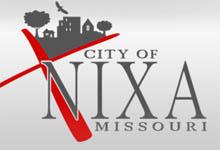In Missouri, Nixa Considers Fiber Investment
Located in the southwestern corner of Missouri, Nixa has joined the growing list of local communities fed up with slow Internet access. A recent Rance Birger News-Leader article, describes the frustration of local tech CEO, Jeremy Bartley. He is not the only business leader in Nixa who is not willing to accept the Internet status quo. Bartley is part of an organized effort to investigate the possibility of a municipal fiber network.
The group has the ear of the City Council and the Mayor, who have put city staff on the project. From the article:
“I personally would like for staff to contact a city that’s relatively our size, and talk to somebody that started from scratch to where they’re successful, and how much it really cost them to do what they did,” [Mayor Sam] Clifton said.
“They may also have some insight on to other issues that arose when they did that as far as legalities and such,” Councilman Aron Peterson said.
Nixa has its own electric utility, which can often facilitate development of a municipal network. The first step is a survey, which will be distributed in March utility bills and is already available online.
Depending on the survey results, which should be available in April, the next step would be a preliminary design.
Like many other communities, Nixa has been left behind by the big national cable and telephone corporations. Community leaders understand why and want to proceed with caution. From the article:
City Administrator Brian Bingle acknowledged that private businesses haven’t shown interest in running fiber in Nixa.
“If the private sector could make money off it, they’d be doing it already, and we all know that,” Bingle said. “We’re looking into something that, one, there is a demand for it, two, that we can get ourselves reimbursed for it."
Nixans who are spearheading the project also see the current and future value of a community owned network:
“One of the goals of my company is to bring other tech companies to Nixa, because it’s the future of businesses, it’s the businesses that are going to create the most income for a city. Tech is the future of all jobs,” Bartley said.



